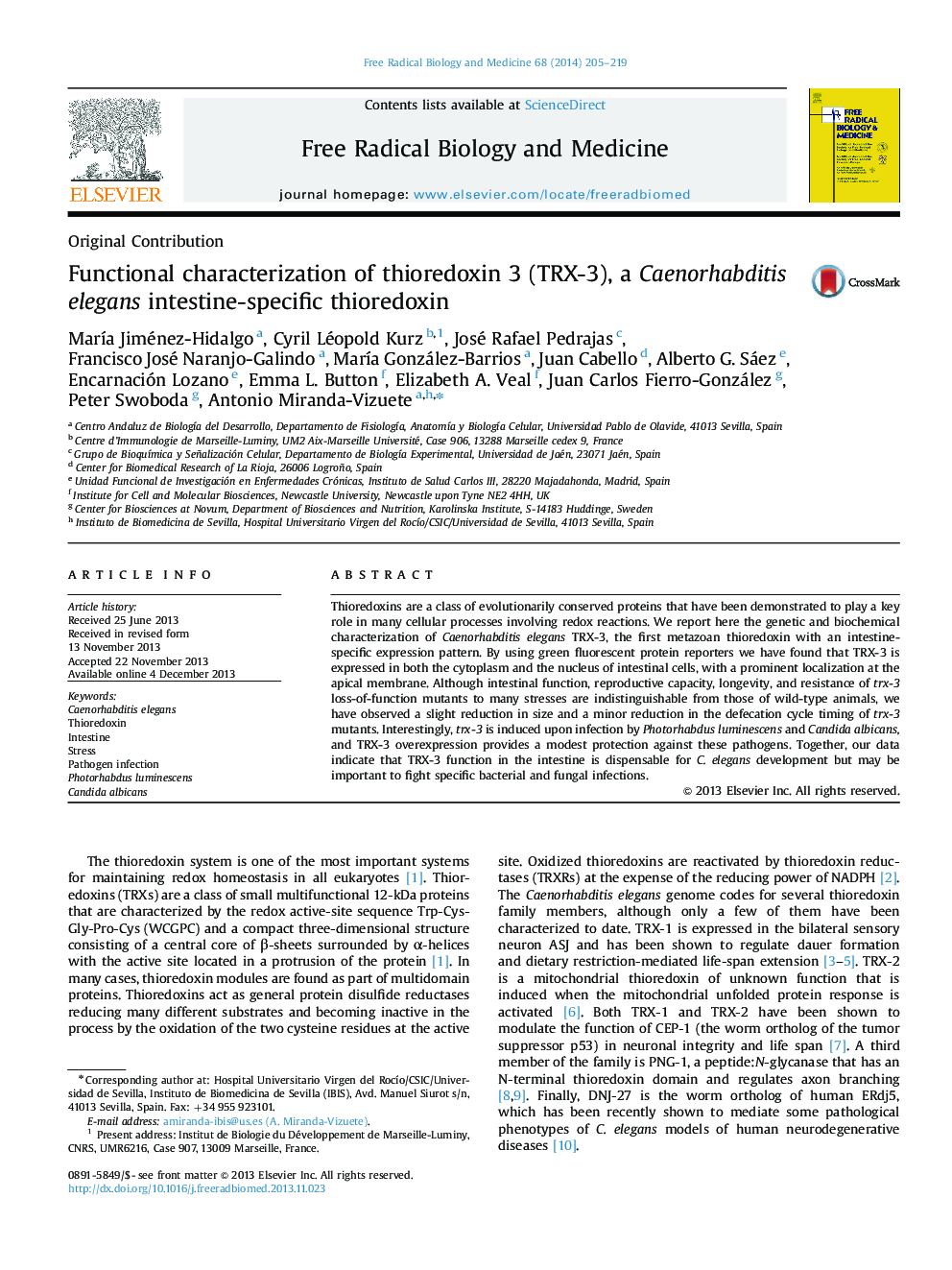| Article ID | Journal | Published Year | Pages | File Type |
|---|---|---|---|---|
| 8270931 | Free Radical Biology and Medicine | 2014 | 15 Pages |
Abstract
Thioredoxins are a class of evolutionarily conserved proteins that have been demonstrated to play a key role in many cellular processes involving redox reactions. We report here the genetic and biochemical characterization of Caenorhabditis elegans TRX-3, the first metazoan thioredoxin with an intestine-specific expression pattern. By using green fluorescent protein reporters we have found that TRX-3 is expressed in both the cytoplasm and the nucleus of intestinal cells, with a prominent localization at the apical membrane. Although intestinal function, reproductive capacity, longevity, and resistance of trx-3 loss-of-function mutants to many stresses are indistinguishable from those of wild-type animals, we have observed a slight reduction in size and a minor reduction in the defecation cycle timing of trx-3 mutants. Interestingly, trx-3 is induced upon infection by Photorhabdus luminescens and Candida albicans, and TRX-3 overexpression provides a modest protection against these pathogens. Together, our data indicate that TRX-3 function in the intestine is dispensable for C. elegans development but may be important to fight specific bacterial and fungal infections.
Keywords
Related Topics
Life Sciences
Biochemistry, Genetics and Molecular Biology
Ageing
Authors
MarÃa Jiménez-Hidalgo, Cyril Léopold Kurz, José Rafael Pedrajas, Francisco José Naranjo-Galindo, MarÃa González-Barrios, Juan Cabello, Alberto G. Sáez, Encarnación Lozano, Emma L. Button, Elizabeth A. Veal, Juan Carlos Fierro-González,
